The world of high-performance supercars has long been dominated by two iconic Italian brands: Lamborghini and Ferrari. These two automotive giants, while both producing world-renowned vehicles that symbolize luxury, speed, and precision engineering, have had a long-standing rivalry that has not only defined the high-performance segment but also influenced the broader automotive industry in profound ways.
The competition between Lamborghini and Ferrari goes beyond just speed and design; it encompasses brand philosophy, engineering innovations, marketing strategies, and even the very nature of automotive craftsmanship. But how does this fierce rivalry shape the entire automotive industry, from mainstream manufacturers to boutique brands? Let’s explore how the competition between Lamborghini and Ferrari has affected the car industry and the driving experience for enthusiasts worldwide.
1. Innovations in Performance and Engineering
At the core of the Lamborghini-Ferrari rivalry is an ongoing battle for supremacy in performance and engineering. Both companies have consistently pushed the boundaries of what is possible in terms of speed, handling, and overall driving experience. This competition has driven both brands to innovate relentlessly.
- Lamborghini’s Focus on Power and Technology: Lamborghini has always been known for its bold, aggressive designs and larger-than-life performance. From the Miura in the 1960s to the modern Aventador and Huracán, Lamborghini has pushed the limits of engine power and performance, often employing larger, naturally aspirated engines. Additionally, Lamborghini has been at the forefront of introducing advanced technologies such as carbon fiber construction, dynamic steering, and the famous four-wheel-drive systems in its cars. These advancements have been adopted by other automakers seeking to compete in the performance car segment.
- Ferrari’s Pursuit of Balance and Precision: Ferrari, on the other hand, has been more focused on the balance between performance and driving experience. While Ferrari cars are certainly powerful, the brand has prioritized handling, weight distribution, and aerodynamics to create cars that are not only fast but incredibly refined. Ferrari’s use of advanced dual-clutch transmissions, active aerodynamics, and hybrid technology (like the LaFerrari) has made the brand a leader in integrating cutting-edge technology with traditional performance characteristics. The competition with Lamborghini has forced Ferrari to continually refine its cars to be more agile, responsive, and capable on both the road and the track.
- Pushing the Limits of Speed: The competition between Lamborghini and Ferrari has led both brands to create some of the fastest, most capable cars on the planet. For instance, Ferrari’s 812 Superfast boasts a top speed of around 211 mph, while the Lamborghini Aventador SVJ has been clocked at an impressive 217 mph. This relentless pursuit of speed has set a benchmark for other high-performance automakers, encouraging the entire industry to elevate their own vehicles in terms of horsepower, speed, and aerodynamics.
2. Design and Aesthetics: Defining the Supercar Look
Both Lamborghini and Ferrari are not only performance powerhouses but also masters of design. The aesthetics of a supercar play a significant role in its allure, and both brands have built distinct, recognizable identities through their designs. The competition between the two has driven both companies to create cars that are not only functional but also stunningly beautiful.
- Lamborghini’s Bold, Aggressive Style: Lamborghini has always embraced exaggerated, angular lines and futuristic styling, ensuring that its cars stand out from the crowd. The aggressive, bold designs of Lamborghinis like the Countach and the Aventador have made them icons of automotive art. The sharp edges, wide stances, and aggressive features make these cars feel like something from a science fiction movie. Lamborghini’s ability to push the limits of design has influenced many other manufacturers, particularly those in the high-performance sports car market, to take more risks with their styling.
- Ferrari’s Elegant, Refined Aesthetics: In contrast, Ferrari has typically gone for a more elegant and fluid design language. The lines of Ferrari cars are sleek, sculpted, and aerodynamic, with an emphasis on balance and harmony. Ferraris like the 458 Italia and F12 Berlinetta have timeless, understated beauty that appeals to those who appreciate not only speed but also craftsmanship and artistry in design. Ferrari’s design philosophy has set the standard for luxury performance cars and has influenced many brands outside of the supercar realm to adopt a more refined aesthetic.
This rivalry between Lamborghini’s boldness and Ferrari’s elegance has helped to define the supercar design language, creating a visual dichotomy in the market that has inspired countless automakers to refine their designs, focusing not just on speed but on how the vehicle looks and feels.
3. Brand Identity and Exclusivity
Beyond engineering and design, the brand identity and exclusivity of Lamborghini and Ferrari play a major role in their ongoing competition. Each brand has created a distinct image that appeals to a certain segment of the high-end consumer market. Their rivalry has impacted the way that luxury brands position themselves in the broader automotive market.
- Ferrari’s Legacy and Racing Pedigree: Ferrari has a long-standing history in motorsports, particularly Formula 1, which has greatly influenced its brand identity. The brand’s cars are often seen as the epitome of performance and prestige, appealing to those who want a connection to the world of racing and a sense of tradition. Ferrari’s success on the racetrack has directly translated into its image as a high-performance, exclusive brand that stands at the pinnacle of the automotive world.
- Lamborghini’s Rebel Image: In contrast, Lamborghini has cultivated a brand identity based on rebellion and exclusivity. Founded as a direct challenge to Ferrari, Lamborghini’s cars have always been designed with the attitude of an outsider, someone who is willing to go against the grain and make a statement. Lamborghini has been able to attract a different kind of luxury buyer—one who wants something unique, bold, and attention-grabbing. This rebellious streak has made Lamborghini the go-to brand for those who want to stand out and make a statement, further elevating the exclusivity of the brand.
The rivalry between Lamborghini and Ferrari has led both companies to continually innovate and push the boundaries of what is possible in terms of brand identity, exclusivity, and status. This has not only influenced other high-end brands, such as Porsche, Aston Martin, and McLaren, but has also created a ripple effect in the broader luxury goods market.
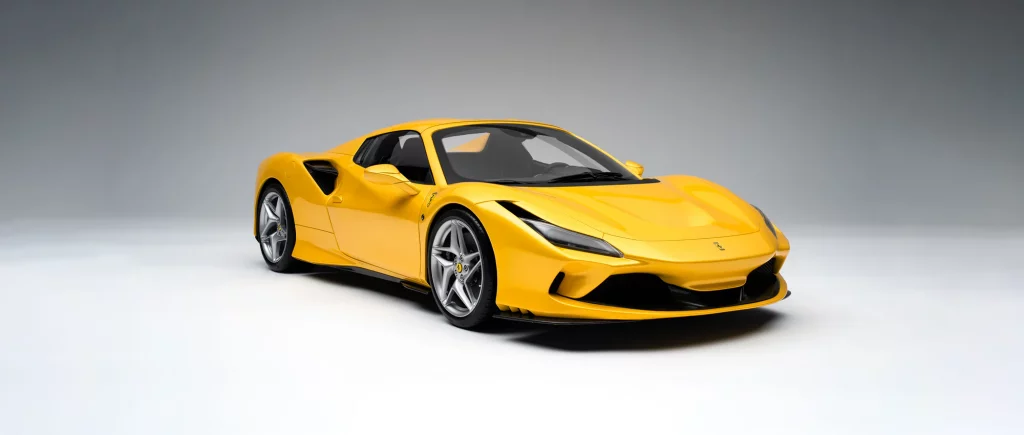
4. Impact on the Broader Automotive Market
The competition between Lamborghini and Ferrari has far-reaching consequences for the entire automotive industry, not just for other supercar brands but also for mainstream automakers.
- Driving Innovation in Mass Production Cars: Many of the technologies and engineering innovations pioneered by Lamborghini and Ferrari have trickled down to more affordable vehicles. For example, carbon fiber construction, dual-clutch transmissions, and aerodynamic enhancements first used in these supercars have made their way into production vehicles from brands like Audi, BMW, and Mercedes-Benz. Supercar brands have helped set the technological agenda for the entire industry, forcing mainstream manufacturers to adopt new technologies faster and more efficiently.
- Influencing Performance Models: The direct competition between Lamborghini and Ferrari has led to the development of new high-performance models from other brands. For instance, McLaren, Aston Martin, and Porsche have all launched vehicles that specifically aim to rival the best offerings from Lamborghini and Ferrari. The rivalry has thus elevated the entire performance car segment, creating a more exciting and competitive marketplace that benefits consumers and drives the development of better, faster, and more refined cars.
- Fuel Efficiency and Sustainability: In recent years, both Lamborghini and Ferrari have recognized the growing demand for environmentally conscious vehicles. Ferrari’s launch of the SF90 Stradale and Lamborghini’s push into hybrid technology with the Sián FKP 37 have set the tone for the future of performance cars. As these brands compete to create faster, more powerful cars that also meet modern emissions standards, the innovation in fuel efficiency and hybrid systems has influenced the automotive industry’s broader shift towards more sustainable vehicles.
5. The Ultimate Driving Experience: Legacy of the Supercar Rivalry
At the heart of the Lamborghini-Ferrari rivalry lies the quest for the ultimate driving experience. The experience of driving a supercar is about more than just speed—it’s about craftsmanship, connection to the road, and an overwhelming sense of power. Both Lamborghini and Ferrari have refined their vehicles to offer unmatched driving pleasure.
This pursuit of the perfect driving experience has influenced not just high-performance brands but also mainstream automakers, which now seek to deliver more engaging and thrilling driving dynamics in their performance-oriented models. The rivalry between Lamborghini and Ferrari has set the benchmark for what a true supercar should be, and this legacy continues to inspire future generations of car enthusiasts and manufacturers alike.
Conclusion
The competition between Lamborghini and Ferrari is more than just a battle for supremacy in the supercar market. It is a driving force behind innovation, design, and brand identity that influences the entire automotive industry. Through their rivalry, both brands have pushed each other to new heights of performance, technology, and luxury, raising the bar for all automakers. Whether it’s through their racing heritage, cutting-edge technology, or the creation of some of the most iconic vehicles in automotive history, Lamborghini and Ferrari’s rivalry has shaped the future of driving and continues to inspire new innovations in the automotive world.



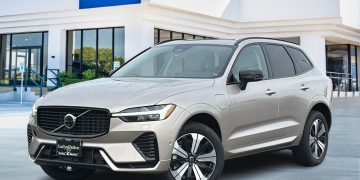







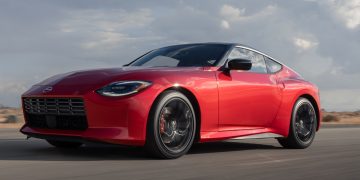


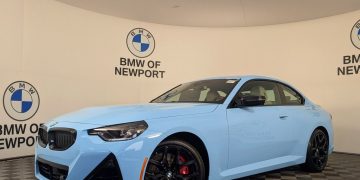






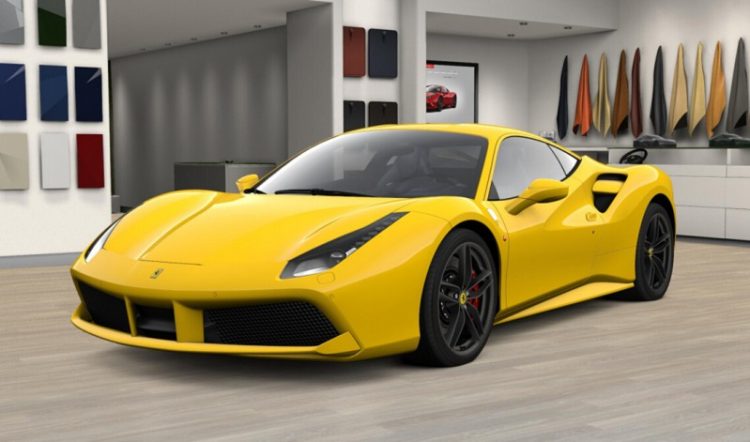












Discussion about this post